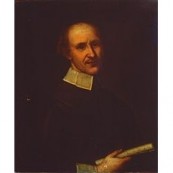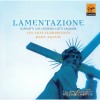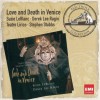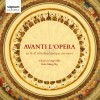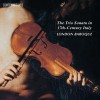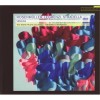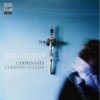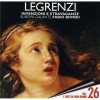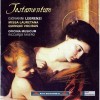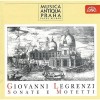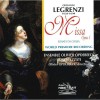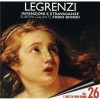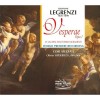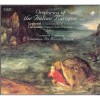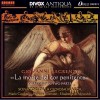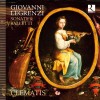传记
Born: (baptized): August 12, 1626 - Clusone, near Bergamo, Italy
Died: May 27, 1690 - Venice, Italy
Giovanni Legrenzi was an Italian composer of opera, vocal and instrumental music, and organist, of the Baroque era. He was one of the most prominent composers in Venice in the late 17th century, and extremely influential on the development of late Baroque idioms across northern Italy.
Life
Giovanni Legrenzi came from a musical family and first studied music with his father. In 1645, he took the position of organist at Santa Maria Maggiore in Bergamo, near Clusone, and held this post until 1656. Like many composers, he entered the priesthood, in 1651. In 1656, he left Bergamo for the more musically prestigious court of Ferrara, where he was named to the position of maestro di cappella at the Accademia dello Santo Spirito, a position he held from 1657 until 1664. He enjoyed great success as both composer and choir master. He left Ferrara at some point in 1665 and little is known about the positions he held or even where he lived until 1670. He was rejected for positions in many cities, including Vienna, Milan, Parma, Bologna, and Venice; and he declined positions in Modena and Bergamo.
In 1670 Giovanni Legrenzi went to Venice, where he became the maestro di coro at the Ospedale dei Derelitti. (Literally named hospitals, "ospedale" were more a cross between boarding homes and conservatories, which specialized, as the names suggest, in the education of orphaned or abandoned girls. Many prominent composers were very closely affiliated with these, most famously, Antonio Vivaldi and the Pieta.) In 1671, he also took the post of maestro di cappella at the oratory of the Congregazione dei Filippini. In 1681, Legrenzi became vice maestro di cappella at San Marco (Venice), succeeding Antonio Sartorio in that position, and in 1683, he became maestro di coro at the Ospedale dei Mendicanti. His most prolific years of opera composition began in 1681, during which he produced at least two major works a year. In 1685, he was promoted to maestro di cappella at San Marco and with this promotion, returned the majority of his attention to sacred music.
Music and Influence
Giovanni Legrenzi was active in most of the genres current in northern Italy in the late 17th century, including sacred vocal music, opera, oratorio, and varieties of instrumental music. Though best known as a composer of instrumental sonatas, he was predominantly a composer of liturgical music with a distinctly dramatic character. The bulk of his instrumental music may also be included in this category, since it would have been used primarily as a substitute for liturgical items at Mass or Vespers. His operas were immensely popular (and extravagantly presented) in their day, though like his oratorios, few have survived. His later dance music was certainly connected with the operatic repertoire, though the function of an early collection (Op. 4, which is musicologically famous for its inclusion of six pieces designated sonate da camera) is less clear.
As in the worlds of literature, technology, and business, often the most inventive musical pioneers are overshadowed by their successors. This is certainly the case with Giovanni Legrenzi, whose name is known to relatively few but whose musical influence is almost impossible to overestimate. Among his students there were Antonio Vivaldi, Francesco Gasparini, Antonio Lotti and Giovanni Varischino, and possibly Antonio Caldara, and he was a major influence on Alessandro Scarlatti. His and his sonatas formed the basis for what was to become the modern format, marked by clear distinctions between the movements and specific tempo indications giving performers more direction and less discretion. He mastered both the trio sonata (sonata a tre) as well as the sonata a due (sonata for two instruments). Typically, the bass is the background for the other instruments, though in many of the sonatas a due, the violin and bass take almost equal roles. These sonatas often featured fugues with carefully crafted sequences and deft changes of theme from tonic to dominant, features that were to become hallmarks of the modern sonata. His cantatas, too, were seminal, with a particularly strong influence on the works of Alessandro Scarlatti. They are also masterly in their use of themes and figures, and show a wide freedom of structure in the disposition of recitative, arioso, and aria passages. Like many of his contemporaries, he excelled in vocal music as well as instrumental, and composed many operas as well as cantatas, though few have remained in the repertoire.





